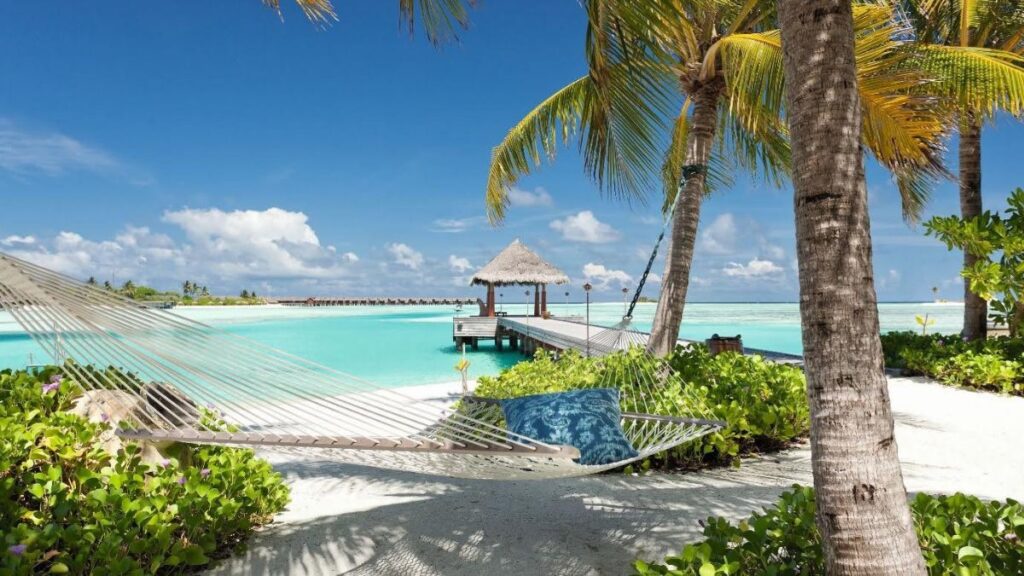Many people around the world associate the Maldives with luxury, floating villas and beaches. The fact is, no doubt it is a calm and serene destination, but same like many other countries, it has another side that is not known to many as it is rarely shown in commercial ads or influencer reels. You can explore this side by booking Maldives holiday packages and heading to this majestic destination yourself. This place serves as more than a romantic place and is a real place with authentic people, local challenges and complexities. In this post, we will share a few facts relevant to the raw side of the Maldives hidden behind the brochures or social media filters.
1. A Nation of Tiny Islands
The Maldives as a whole is made of around 1000 coral islands that are further grouped into 26 atolls and each of which stretches across the Indian Ocean. But here’s the catch: only 200 among these islands are inhabited and the rest of them are either privately owned or inhabited and often turned into luxury resorts. Therefore, most of the Maldivian resorts are located on their own separate islands and are totally disconnected from the local population for secluded and serene experiences. Though it counts for a peaceful vacation, still many of the tourists may leave without ever seeing the local lifestyle or properly understanding the geography of the country. The life of the locals is far different from what tourists experience in these secluded resorts.
2. Life Outside the Resorts
Most of the Maldivian locals live on inhabited islands that are nothing like the resort islands and are instead highly populated with narrow streets, schools, mosques, shopping spots and small homes. Also, there is no infinity pool or floating breakfast in sight and the daily life here can be tough as many of these islands may have limited access to clean water, medical care and disposal systems. Most of the locals rely on fishing and small-scale tourism to earn a living. Also, most of the locals work on resort islands in low-paid positions like housekeeping, kitchen staff or maintenance, away from their families for a month or two. The contrast between tourist luxury and local life is quite notable and is often overlooked or unknown to many.
3. Environmental Challenges
The Maldives is one of the countries greatly affected by climate change and its highest natural point is just 7.9 feet above the sea level. The coastal erosion, coral bleaching and increasing storms here have already affected many of the islands here. Also, while the country promotes itself as an eco-tourism destination, mass tourism itself can harm the environment and large resorts consume a greater amount of energy and fresh water and produce significant waste. Plastic pollution is also a major problem here which is hidden by resorts that hide their waste on local islands, beaches and sometimes with plastic debris.
4. Waste Management Issues
You may never get to see the trashy or polluted side of the Maldives in ads, and of course, why would someone market that if the purpose is to call the tourists to the Maldives? There is a trash island named Thilafushi located near Male, where most of the country’s waste is dumped and burned, including the waste coming from resorts. It started off as a lagoon and is now filled in with waste which has become a major environmental problem now. The toxic smoke and uncontrolled burning and chemicals make this place a hazard for the workers, nearby residents, and of course, the planet. Waste management in the Maldives has thus become a growing crisis and this arises the need of better systems to protect both public health and the environment.
5. Social Rules and Restrictions
While the resorts here operate freely, on local islands, there are certain rules and restrictions that one needs to follow. On certain local islands, alcohol is banned and public dresses are modest as well as there are strict laws around religion and social behaviour. Tourists who visit the local islands or guesthouses are expected to follow such local customs such as modest clothing and avoiding public display of affection. These rules can surprise travellers who assume the entire country is free-spirited as the resorts. However, it is equally important to respect these traditions when visiting local areas as they reflect the values of beliefs of most people who live here.
6. Political and Economic Struggles
The Maldives has faced political instability for years, including government changes and corruption scandals and this side of the place is still unknown to the tourists though it equally impacts the daily lives of the locals here. The country’s economy majorly relies on tourism that makes 30 percent of its GDP and this dependence makes the Maldives vulnerable to global events like pandemics and natural disasters. For instance, the economy here took a massive hit and thousands of locals were unemployed during the COVID-19 pandemic. This reliance on tourism puts a massive pressure on keeping things look perfect even when there are problems behind the scenes.
7. Limited Opportunities for Locals
Despite being popular all across the globe, the country still faces issues with youth unemployment, lack of higher education opportunities and limited job options outside of fishing or tourism. There are many youngsters who might feel disconnected from the future their country is building especially with the focus on luxury tourism that isn’t even benefiting them directly. Even some of them migrate abroad to seek better professional opportunities to excel in life. Education and training are though improving but the rate is quite low and this imbalance between the rich resort life and everyday life brings a strong gap and many of the locals feel left behind.
8. The Power of Tourism and Its Consequences
Tourism brings billions of dollars in the Maldives, and there is no denying the fact. But most of this wealth goes to the international investors and luxury hotel brands and the locals working here only get a small fraction of that money. In the current times, the government has tried to support local tourism by opening small hotels on local islands as well as guesthouses, which has opened doors for more budget travellers and helped bring income to local communities as well. Still, many of the businesses here struggle to compete with the power and money behind the international resort chains.
9. A Country Worth Understanding
Overall, the country is rich in beauty and nature, but is also fragile and facing serious challenges at the same time. Seeing the polished version only may give a false impression not just of the country but also of the people who call it home. So, if you are planning to visit it, consider going beyond the typical resort and visit a local island, talk to the locals, exploring the culture, and most importantly, respect the environment. You will come back with a richer and more honest review of the place.
Sum Up,
Taking a look at the unfiltered side of the Maldives reminds us of the fact that every paradise has its own struggles. As travellers, we must play our role in supporting a meaningful change. The next time you see a travel ad showing the Maldives as a pure paradise, do remember there is more to the story, and it is totally worth knowing. Book your Maldives holiday packages today with Virikson Holidays and get started with a journey full of cultural exploration and thrill.






